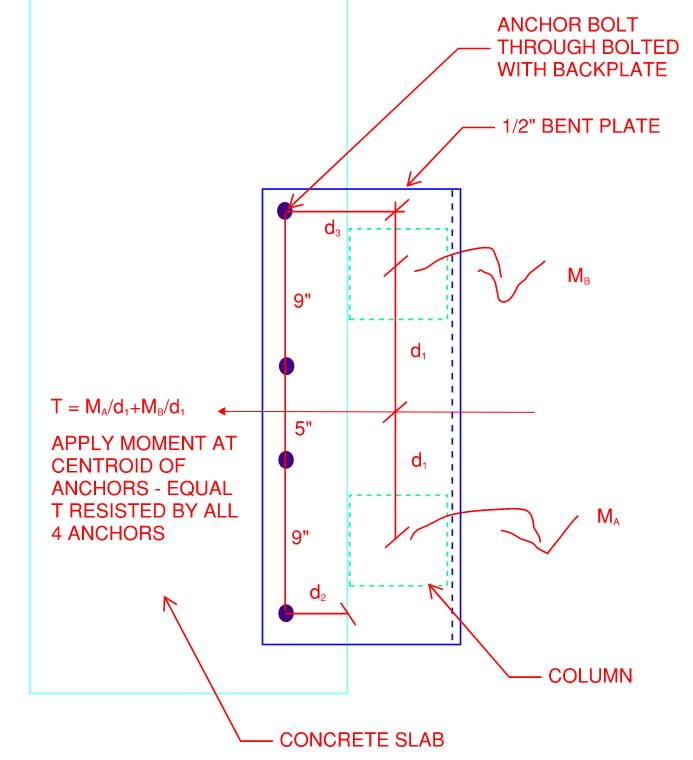I have a loading situation where some of my anchors are more heavily loaded than others.
I'm trying to take advantage of the less loaded anchors to share the load but want to make sure my approach is correct.
There's a moment on the bent plate connecting two columns - one column is more heavily loaded than the other (MA).
Converting the moment to a force couple and moving that to the centroid of the anchor bolt group does help to reduce the maximum tension on the anchors - I'm relying on the bent plate to redistribute forces but don't have a great way to quantify that.
Also, it appears that the d3 value is not critical which seems counter-intuitive.

I'm trying to take advantage of the less loaded anchors to share the load but want to make sure my approach is correct.
There's a moment on the bent plate connecting two columns - one column is more heavily loaded than the other (MA).
Converting the moment to a force couple and moving that to the centroid of the anchor bolt group does help to reduce the maximum tension on the anchors - I'm relying on the bent plate to redistribute forces but don't have a great way to quantify that.
Also, it appears that the d3 value is not critical which seems counter-intuitive.



